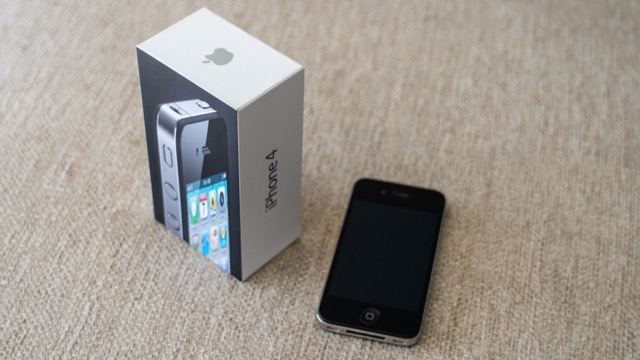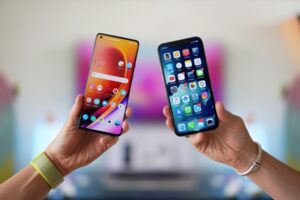Table of Contents
Who is Steve Jobs?
Steve Jobs was the co-founder, visionary leader, and former CEO of Apple Inc. He is widely regarded as one of the most influential figures in modern technology and design. Known for his relentless pursuit of innovation and attention to detail, Jobs played a pivotal role in shaping the development of personal computers, smartphones, and digital media. His work at Apple led to the creation of iconic products such as the iPhone, iPad, and Mac, which revolutionized entire industries and transformed the way people interact with technology. Jobs’ legacy continues to influence Apple’s products and strategy long after his passing in 2011.
The Legacy of Steve Jobs
Understanding the iPhone 4S as the model which iPhone ended with Steve Jobs requires appreciating Steve Jobs’ profound impact on Apple and the technology industry. His legacy is deeply intertwined with the evolution of Apple’s products, especially the iPhone.
Steve Jobs’ Influence on Apple:
- Innovative Vision: Jobs was known for his relentless pursuit of innovation. His vision transformed Apple from a struggling company into a technology powerhouse.
- Design Philosophy: Jobs emphasized simplicity and elegance. This philosophy is evident in the streamlined design and user interface of iPhones.
- Product Launches: Under Jobs’ leadership, Apple introduced groundbreaking products, including the original iPhone, which redefined the smartphone market.
The iPhone 4S, as the last model released while Jobs was still CEO, encapsulates his vision of integrating advanced technology with a user-friendly experience. Jobs’ impact on the iPhone 4S and subsequent models is a testament to his lasting influence on Apple’s product design and strategy.
The Cultural Impact of Steve Jobs’ Legacy
Steve Jobs didn’t just create products—he created a culture of innovation that influenced industries far beyond technology. His focus on design, functionality, and user experience left an indelible mark on Apple and the world.
Steve Jobs’ Enduring Cultural Influence:
- Design Aesthetics: Jobs’ emphasis on sleek, minimalist design changed how products are created, pushing industries to focus on aesthetics as much as functionality.
- Consumer Expectations: Jobs’ attention to detail set a new standard for what consumers expect from technology, from build quality to user interface design.
- Innovation Mindset: Apple’s commitment to continuous innovation is a direct reflection of Jobs’ relentless pursuit of perfection.
Even years after his passing, Steve Jobs’ influence can still be seen in Apple’s products, making his legacy a cornerstone of the company’s success.
Steve Jobs and the Birth of the iPhone
To understand the significance of Steve Jobs’ final iPhone, it’s essential to recognize his role in the creation of the original iPhone. Jobs didn’t just want to build a phone—he aimed to redefine what a mobile device could be. The iPhone, first released in 2007, was a bold step forward for Apple, blending a phone, iPod, and internet communicator into one seamless device.
Why Steve Jobs’ Vision Shaped the iPhone:
- User-Centric Design: Jobs emphasized making technology accessible and intuitive, eliminating complex buttons and focusing on touch-screen navigation.
- Integration of Hardware and Software: Jobs’ approach ensured that Apple designed both the hardware and software, allowing for seamless integration.
- Market Disruption: The iPhone redefined smartphones, leading to a new era in mobile technology and influencing future competitors.
Jobs’ vision for the iPhone laid the groundwork for every model that followed, including the iPhone 4S, making his influence crucial to understanding the evolution of mobile technology.
Which iPhone Ended with Steve Jobs?
Are you wondering which iPhone ended with Steve Jobs? The iPhone 4S, introduced on October 14, 2011, is the last iPhone released under Steve Jobs’ leadership at Apple. It’s important to recognize the historical and technological significance of this particular model.
Here’s why the iPhone 4S is crucial in this context:
- Final Product Under Jobs’ Tenure: The iPhone 4S was unveiled shortly before Steve Jobs’ resignation as CEO, making it the final iPhone that he oversaw.
- Technological Innovations: This model introduced key features like Siri, Apple’s voice assistant, which highlighted Jobs’ vision for intuitive, user-friendly technology.
- Legacy Impact: The iPhone 4S not only reflected the advancements of its time but also set a high standard for future iPhone models.
Steve Jobs’ influence on Apple’s design philosophy and technological direction was profoundly felt through the iPhone 4S. His departure marked a significant shift in the company’s trajectory, but the innovations introduced in the iPhone 4S continue to reflect his legacy in Apple’s product line.
The iPhone Model: iPhone 4S
the iPhone 4S is the model that stands out. Released on October 14, 2011, it was the final iPhone introduced during Jobs’ tenure at Apple. This model is notable for several reasons:
- Introduction of Siri: The iPhone 4S was the first iPhone to feature Siri, Apple’s voice-activated assistant. This innovation marked a significant advancement in user interaction and set a new standard for voice-controlled technology.
- Enhanced Camera: It came equipped with an 8-megapixel rear camera capable of recording 1080p HD video. This improvement was a major leap in mobile photography and video recording.
- Performance Upgrades: Powered by the A5 chip, the iPhone 4S offered improved performance and efficiency compared to its predecessors, making it faster and more responsive.
The iPhone 4S played a pivotal role in cementing Steve Jobs’ legacy at Apple. Its introduction just before Jobs’ resignation underscored his commitment to delivering cutting-edge technology and innovative features. This model not only marked the end of an era but also showcased the technological advancements that defined Jobs’ era at Apple.
Impact of Steve Jobs’ Final iPhone
The iPhone 4S, had a lasting impact on both Apple and the broader technology landscape. As the final iPhone introduced during Steve Jobs’ leadership, its influence extends beyond its initial release.
Key Impacts of the iPhone 4S:
- Technological Advancements:
- Siri Integration: The launch of Siri marked a new era in voice recognition technology and has become a hallmark of Apple’s iOS ecosystem.
- Camera Quality: The iPhone 4S set new standards for mobile photography with its advanced 8-megapixel camera and HD video recording capabilities.
- Transition of Leadership:
- Tim Cook’s Era: The release of the iPhone 4S coincided with Tim Cook’s appointment as CEO. This transition was crucial for maintaining Apple’s innovation trajectory while steering the company into a new era.
- Continuity and Change: The iPhone 4S represented a bridge between Jobs’ visionary leadership and Cook’s strategic direction, ensuring continuity in Apple’s product development.
- Legacy and Influence:
- High Standards: The iPhone 4S established high expectations for future iPhone models in terms of performance and features.
- Cultural Impact: Its introduction reinforced Apple’s reputation for innovation and user-centric design, influencing how smartphones are developed and perceived today.
In summary, the iPhone 4S, as the final iPhone introduced under Steve Jobs, not only reflected his innovative spirit but also paved the way for future advancements in mobile technology and Apple’s leadership.
is a skilled Web Developer and Designer. He builds and designs websites that focus on best UI/UX practices. Justin is also a Verizon Product Expert at Victra, helping customers with Verizon products and services. His mix of design, coding, product, and general knowledge makes him a valuable and knowledgeable team member.




